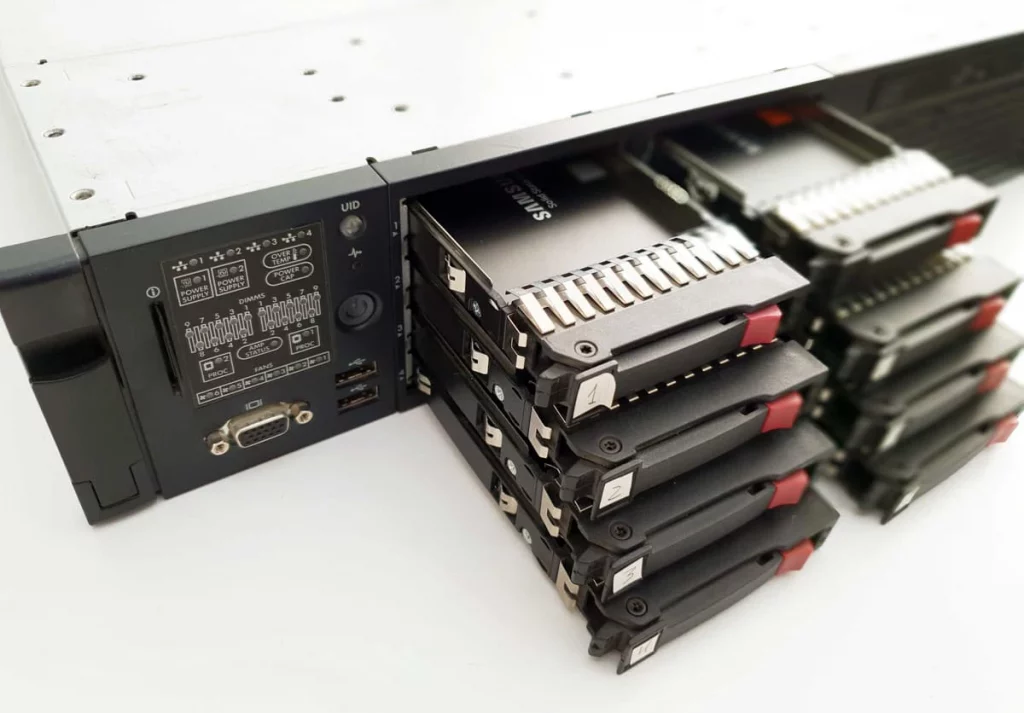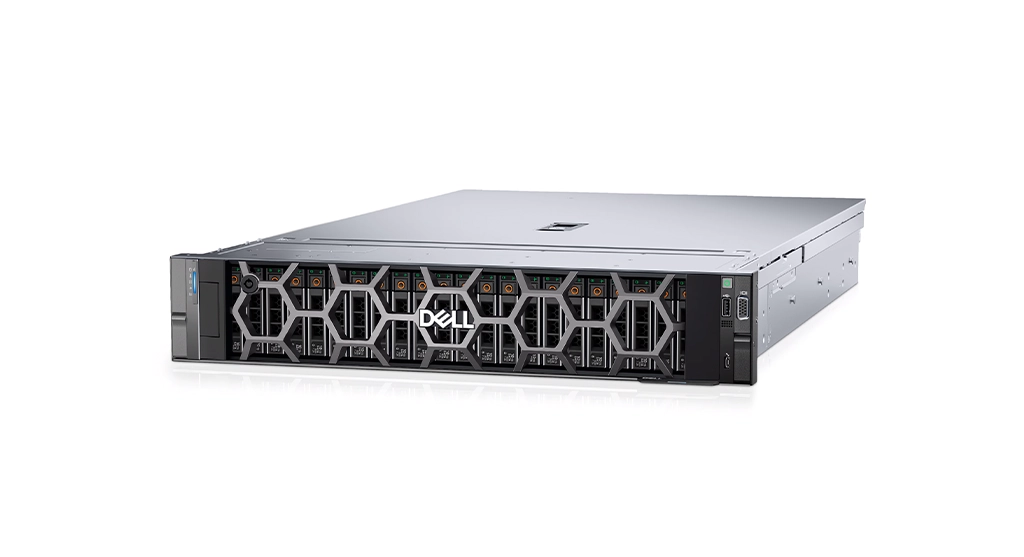When a server crashes, everything from file access to application performance can grind to a halt. Whether it is a web server running core operations or a RAID system holding critical databases, the impact is the same: downtime, data inaccessibility and financial risk.
A server crash often strikes without warning, triggered by hardware faults, software errors or external events such as power surges. The fastest way to limit damage is to understand the cause and act quickly before corruption propagates.
In this guide, you will learn the most common causes of server crashes, how to spot early warning signs and the steps to recover data safely.
We also outline how the specialists at RAID Recovery Services deliver end-to-end server crash recovery and return systems to full operation.

What Happens When a Server Crashes
A server crash immediately disrupts connected systems and users. Applications freeze, shared files become inaccessible, and websites or databases stop responding.
Even brief downtime can cause data loss or interrupt critical business operations.
During a crash, data held in active memory may be lost, and pending writes can corrupt files. If the server runs a RAID array, the configuration can become inconsistent, leaving drives unreadable or missing.
Extended outages may also damage the operating system or partition tables, making safe restart difficult. In business environments, this leads to lost productivity, customer service interruptions and compromised data integrity.
To understand how servers underpin daily operations and the real risks of downtime, read our detailed guide on Server for Business.
Common Reasons for Server Crash
Server crashes occur for many reasons, from hardware defects to software corruption. Understanding these causes helps you pinpoint the root problem faster and apply the right preventative measures.
Here are the most common reasons for a server crash:
Hardware failure: Faulty hard drives, damaged memory modules or overheating CPUs can cause immediate shutdowns.
Power surge or outage: Sudden interruptions or voltage spikes can corrupt data and damage components.
Overheating: Poor ventilation or dust buildup in cooling fans can trigger thermal shutdowns to protect the system.
RAID controller malfunction: A failed or unstable controller can break communication between drives and the host, leading to data loss. Learn more in our post on RAID Controller Failure Recovery.
Software or OS corruption: Incomplete updates, bad sectors or application conflicts can destabilise the operating system.
Malware or ransomware attack: Infected servers may lock, encrypt or delete data.
Human error: Misconfigurations during setup or maintenance, including accidental formatting or improper rebuilds, can also trigger crashes.
Identifying which of these factors caused the failure is the first step toward a correct and safe recovery.

How to Identify the Type of Server Failure
Before attempting recovery, determine whether the crash stems from hardware, software or configuration failure. Each requires a different approach and skill set.
Hardware failures show clearer signs such as clicking noises, warning LEDs or overheating. If the server will not boot or shows BIOS errors, the issue is likely physical.
Software related failures typically present as corrupted files, blue screen errors or boot loops, pointing to problems in the operating system or installed applications.
Configuration or RAID failures are often more complex. Missing drives or a degraded volume usually indicate RAID synchronisation issues. For deeper guidance, review our Troubleshoot RAID Failure resource.
Gathering these symptoms early helps engineers diagnose accurately and prevents further data damage.
What to Do When Your Server Crashes
Act methodically and avoid changes that could worsen the issue. Follow these steps to minimise data loss and prepare for safe recovery:
Power down safely: Shut the server down immediately to prevent further damage or overwriting of critical data.
Do not attempt a rebuild: Avoid rebuilding or reconfiguring RAID arrays without expert guidance. Incorrect rebuilds can make recovery impossible.
Document symptoms and errors: Record error codes, warning lights and unusual noises. These details help pinpoint root cause later.
Check basic connections: Inspect cables, power supplies and external components to rule out simple hardware faults.
Contact a professional recovery team: Server level failures often require specialist tools and a cleanroom environment.
Once the system is stable and properly documented, contact RAID Recovery Services for a full evaluation before taking any further action.

Professional Server Crash Recovery Process
Recovering data from a crashed server demands precision, advanced tooling and controlled conditions. At RAID Recovery Services, our engineers follow a structured workflow to maximise success while maintaining complete data integrity.
The process typically includes:
We run a detailed assessment to determine failure type and media condition, capturing logs and error states for accurate diagnosis.
Engineers create sector by sector images of all drives to preserve originals. This prevents further degradation during analysis.
If a RAID was in use, we rebuild the array virtually with diagnostic tooling. This restores logical parameters and file structures without writing to source media.
With the layout verified, files are extracted and validated for integrity, with corrupted regions handled via targeted reads.
Recovered sets are checked for completeness. Clients can remotely verify their data before final handover on a new storage device.
We have successfully resolved complex incidents such as Oracle SPARC T7 server recovery following HSM failure, restoring full access to critical datasets for enterprise clients.
Our server crash recovery approach blends deep experience, robust technology and secure handling to protect every piece of your information.

Preventing Future Server Crashes
Once your server is restored, put controls in place to keep it stable and secure. Routine care and monitoring significantly reduce the risk of another crash.
Back up regularly: Maintain local and cloud backups for resilience. See our guide on Server Cloud Backup.
Monitor system health: Track temperatures, storage capacity and performance to catch issues early.
Use power protection: A UPS helps prevent damage from sudden outages or surges.
Maintain hardware: Clean fans, replace failing drives and update firmware on schedule.
Enhance security: Use strong credentials and reputable anti malware. Learn more in Data Loss Prevention.
Small preventive actions today help you avoid costly downtime later.
Fast turnaround times for business-critical data
Conclusion
A server crash can disrupt operations, cause data loss and lead to costly downtime. Understanding the cause and acting quickly can be the difference between full recovery and permanent damage.
When expert support is required, RAID Recovery Services delivers proven server crash recovery across all failure types. Our engineers handle complex RAID and enterprise systems with precision and confidentiality.
If your server has crashed or is showing early signs of failure, contact us to start a secure recovery and restore access to your data.

Trust the experts with proven results
Frequently Asked Questions
What usually causes a server to crash?
Hardware failure, overheating, software corruption, power issues and human error during maintenance are common triggers. Malware infections or failed updates can also cause sudden downtime.
Can I restart my server after it crashes?
Only after basic checks. Inspect for physical damage, loose cables or overheating first. If problems persist, avoid repeated restarts and contact professionals to prevent further corruption.
How long does server data recovery take?
It depends on the root cause and storage setup. Minor software faults may be resolved in hours. Complex RAID server crash recovery can take several days.
Can data be recovered after a complete server failure?
In most cases, yes, provided the drives are intact. Specialists image the media, reconstruct the system virtually and extract files from the damaged configuration.
How can I prevent future server crashes?
Schedule routine maintenance, keep firmware current, monitor performance and implement regular backups. A UPS and reputable security controls further reduce the risk of unexpected failures.